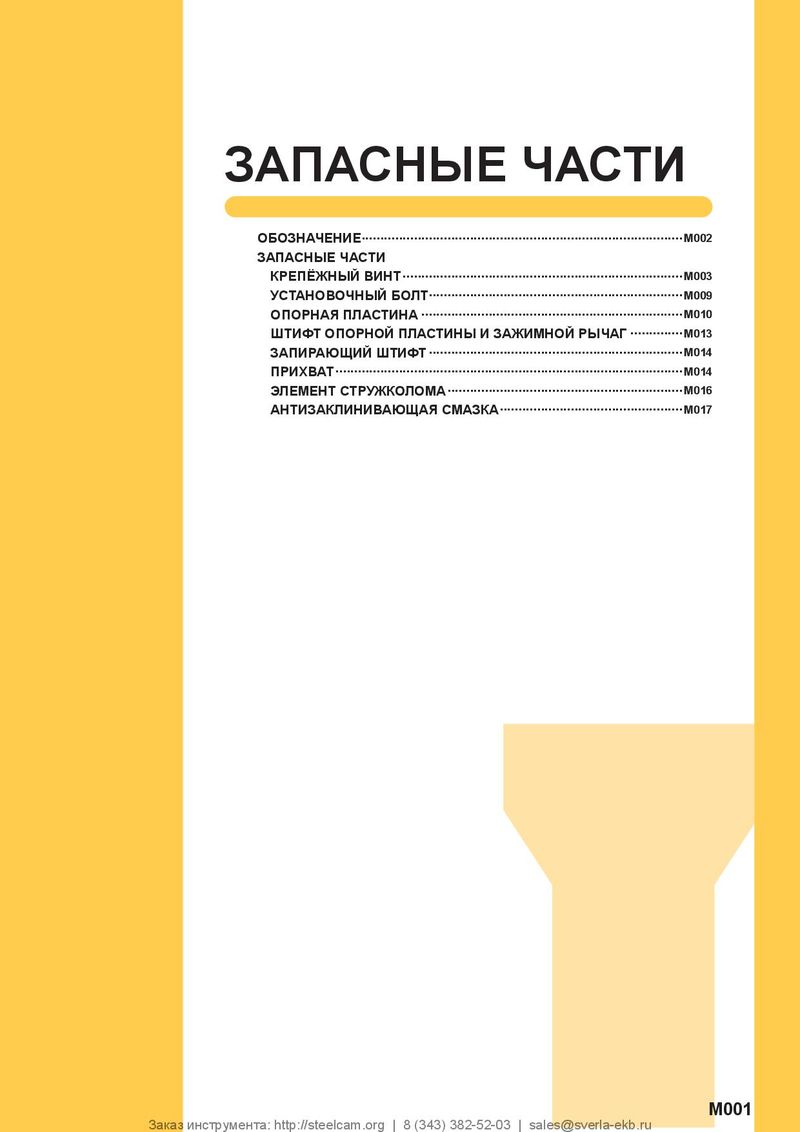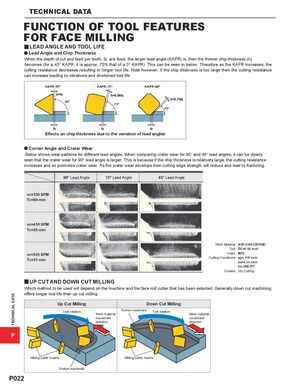Общий каталог Mitsubishi 2020 - 2021 - страница 1737
Навигация
 Каталог Mitsubishi Materials запасные части
Каталог Mitsubishi Materials запасные части Каталог Mitsubishi Materials резьбонарезной инструмент
Каталог Mitsubishi Materials резьбонарезной инструмент Каталог Mitsubishi Materials СНП с CBN и PCD для токарной обработки
Каталог Mitsubishi Materials СНП с CBN и PCD для токарной обработки Каталог Mitsubishi Materials сверлильные инструменты
Каталог Mitsubishi Materials сверлильные инструменты Каталог Mitsubishi Materials расточной инструмент
Каталог Mitsubishi Materials расточной инструмент Каталог Mitsubishi Materials пластины для точения
Каталог Mitsubishi Materials пластины для точения 
TECHNICAL DATA FUNCTION OF TOOL FEATURES FOR FACE MILLING y LEAD ANGLE AND TOOL LIFE a Lead Angle and Chip Thickness When the depth of cut and feed per tooth, fz, are fixed, the larger lead angle (KAPR) is, then the thinner chip thickness (h) becomes (for a 45° KAPR, it is approx. 75% that of a 0° KAPR). This can be seen in below. Therefore as the KAPR increases, the cutting resistance decreases resulting in longer tool life. Note however, if the chip thickness is too large then the cutting resistance can increase leading to vibrations and shortened tool life. KAPR 90° KAPR 75° KAPR 90° 75° 45° Effects on chip thickness due to the variation of lead angles a Corner Angle and Crater Wear Below shows wear patterns for different lead angles. When comparing crater wear for 90° and 45° lead angles, it can be clearly seen that the crater wear for 90° lead angle is larger. This is because if the chip thickness is relatively large, the cutting resistance increases and so promotes crater wear. As the crater wear develops then cutting edge strength will reduce and lead to fracturing. 90° Lead Angle 75° Lead Angle 45° Lead Angle vc=330 SFM Tc=69 min vc=410 SFM Tc=55 min Work Material : AISI 4340 (287HB) Tool : DC=4.92 inch vc=525 SFM Insert : M20 Tc=31 min Cutting Conditions : ap=.118 inchae=4.33 inch fz=.008 IPT Coolant : Dry Cutting y UP CUT AND DOWN CUT MILLING Which method to be used will depend on the machine and the face mill cutter that has been selected. Generally down cut machining offers longer tool life than up cut milling. Up Cut Milling Down Cut Milling Tool rotation Portion machined Tool rotation Work material Work material movement movement direction direction P Milling cutter inserts Milling cutter inserts Portion machined P022 TECHNICAL DATA